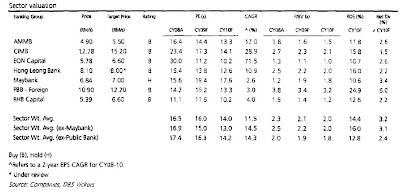Another year has passed, I cannot believe that I am still blogging after 4 years. Thanks to the growing readership, that has kept me motivated. Many still ask why I blog.

The Equaliser
Casual conversations can sometimes elicit the roll of our eyes, and sometimes I have to stop myself wanting to explain an investing issue further among friends as it could drag on and on. However, when you can add logic and persuasion into an investing issue, we must not hoard knowledge or information. There are again two types of people in the world when it comes to knowledge and information dissemination. Group one are those who will try and get by by hoarding as much knowledge and information for their advantage (what the rest don't know would benefit me, I have leverage and the edge). Group one are also those who are likely to "lord over people" with their "extra knowledge and information". For example, they are the ones who may have a passion for wines and would read up voraciously on it, and in social settings will snigger and gently shake their heads at any faux pas or shallow commentary on certain wines - that's lording over people. Get me away from these types. No one is better or should be compared based on what they know, who they know, what jobs they do, how much they earn, ... we just are. Nobody will know everything, can the same wine expert tell me the difference between a Montecristo Edmundo and a Trinidad Robusto Extra? Or what's a kimedashi, okuridashi and oshidashi in sumo? So why lord over people in the first place?

My favourite word in English / French is "egalite" or egalitarian. Meaning: asserting, resulting from, or characterized by belief in the equality of all people, esp. in political, economic, or social life. I don't lose out if others benefit, its all in your mindset, which is why I blog, I believe the internet is The Great Egalite, the great equaliser. Of course, equality is a desired quality to aspire to, and true equality must not be based on a desired quality as reality may dictate that the flip side is true. True equality can only be pursued when you are convinced that ITS TRUE, just existing gives you the "rights", that should be the entire argument and basis. Or if you are spiritually minded, the maker maketh, hence I am. No one can or should make another person anything "less". My blog welcomes group two types; if you are in group one, well ... seriously you are not welcomed.
Too many people buy and sell shares with minimal information or analysis. Although what I write may not be solid gold all the time, I hope it helps to keep track of things that all investors should be paying attention to. I hope people benefit from my blog. In exchange, the blog helps me to channel my aspirations as a writer, to channel my anger and frustrations at things that are "silly", people that are "incompetent", talk about ideas that are great and pummel those that should be vilified.
p/s photos: Nozomi Sasaki














 .
.



![[9.25.09+eason+with+rebecca+pan.jpg]](http://4.bp.blogspot.com/_U-fut6GqAyA/SrytdQE0BFI/AAAAAAAAEbA/dWzq__JQIzI/s1600/9.25.09%2Beason%2Bwith%2Brebecca%2Bpan.jpg)









